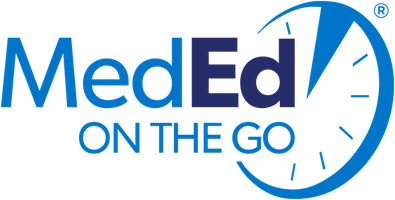This series of brief episodes addresses how primary care providers can recognize early and often subtle signs of hepatic encephalopathy to support timely diagnosis and intervention. Drs. Robert Brown and Steven Flamm discuss clinical indicators that may prompt treatment initiation or specialist referral. The discussion focuses on optimizing patient care through early recognition and appropriate management strategies in the primary care setting.
Improving Preventive Care of Patients With Hepatic Encephalopathy: Navigating the Subtleties and Beyond
Hepatic Encephalopathy: Unmet Therapeutic Needs
Disclosure of Relevant Financial Relationships
In accordance with the ACCME Standards for Integrity and Independence, it is the policy of Global Learning Collaborative (GLC) that faculty and other individuals who are in the position to control the content of this activity disclose any real or apparent financial relationships relating to the topics of this educational activity. Global Learning Collaborative (GLC) has full policies in place that have identified and mitigated financial relationships and conflicts of interest to ensure independence, objectivity, balance, and scientific accuracy prior to this educational activity.
The following faculty/staff members have reported financial relationships with ineligible companies within the last 24 months.
Faculty:
Robert S. Brown, Jr, MD, MPH
Vincent Astor Distinguished Professor of Medicine
Weill Cornell Medicine
New York, NY
Dr. Brown has reported the following relevant financial relationships or relationships with ineligible companies of any amount during the past 24 months:
Advisor/Consultant: AbbVie, eGenesis, Gilead, GSK, Intercept, Madrigal, Mallinckrodt, Mirum, Salix
Contracted Researcher: Gilead, Madrigal
Steven Flamm, MD
Professor, Department of Internal Medicine
Rush University Medical Center
Chicago, IL
Dr. Flamm has reported the following relevant financial relationships or relationships with ineligible companies of any amount during the past 24 months:
Advisor/Consultant: Gilead, Intercept, Ipsen, Madrigal
Other: GSK Advisory Board
Reviewers/Content Planners/Authors:- Cindy Davidson has no relevant relationships to disclose.
- Rosanne Strauss, PharmD, MBA, has no relevant relationships to disclose.
- Brian P. McDonough, MD, FAAFP, has no relevant relationships to disclose.
Target Audience
This activity has been designed to meet the educational needs of primary care and family medicine physicians as well as all other physicians, physician assistants, nurse practitioners, nurses, pharmacists, and healthcare providers involved in managing patients with hepatic encephalopathy.
Learning Objectives
Upon completion of this activity, learners should be better able to:
- Explain the clinical importance of the onset of minimal hepatic encephalopathy (MHE)
- Determine components of the diagnostic workup for a patient with MHE
- Determine an appropriate treatment regimen for a patient with hepatic encephalopathy (HE)
- Summarize data from clinical trials of an emerging therapy for HE
Accreditation and Credit Designation Statements
In support of improving patient care, Global Learning Collaborative (GLC) is jointly accredited by the Accreditation Council for Continuing Medical Education (ACCME), the Accreditation Council for Pharmacy Education (ACPE), and the American Nurses Credentialing Center (ANCC) to provide continuing education for the healthcare team.
Global Learning Collaborative (GLC) designates this enduring activity for a maximum of 1.0 AMA PRA Category 1 Credit(s)™. Physicians should claim only the credit commensurate with the extent of their participation in the activity.
Global Learning Collaborative (GLC) designates this activity for 1.0 nursing contact hour(s). Nurses should claim only the credit commensurate with the extent of their participation in the activity.Global Learning Collaborative (GLC) designates this activity for 1.0 contact hour(s)/0.1 CEUs of pharmacy contact hour(s).
The Universal Activity Number for this program is JA0006235-0000-25-128-H01-P. This learning activity is knowledge-based. Your CE credits will be electronically submitted to the NABP upon successful completion of the activity. Pharmacists with questions can contact NABP customer service (custserv@nabp.net).Global Learning Collaborative (GLC) has been authorized by the American Academy of PAs (AAPA) to award AAPA Category 1 CME credit(s) for activities planned in accordance with AAPA CME Criteria. This activity is designated for 1.0 AAPA Category 1 CME credit(s). Approval is valid until 10/23/26. PAs should claim only the credit commensurate with the extent of their participation in the activity.
Provider(s)/Educational Partner(s)

It’s about time! Today’s on-the-go learners have minutes to spend on education instead of hours. Total CME is an award-winning, global healthcare education company that strategically pioneers methodology, initiatives, and platforms to meet these time-limited needs. Unlike other medical education companies, Total CME employs a microlearning approach and platform to create outcome-based curricula that motivates HCPs to engage in self-directed point-of-care learning that impacts change in real time. Even while reaching the largest global distribution, we provide the most personalized, seamless learner experience. We’re meeting our busy learners where they are so they can focus on what they want when they need it, ultimately leading to behavior changes that impact clinical practice and empower patients in their own care.
Commercial Support
This activity is supported by an independent educational grant from Bausch Health.
Disclaimer
The views and opinions expressed in this educational activity are those of the faculty and do not necessarily represent the views of GLC. This presentation is not intended to define an exclusive course of patient management; the participant should use his/her clinical judgment, knowledge, experience, and diagnostic skills in applying or adopting for professional use any of the information provided herein. Any procedures, medications, or other courses of diagnosis or treatment discussed or suggested in this activity should not be used by clinicians without evaluation of their patients’ conditions and contraindications or dangers in use, review of any applicable manufacturer’s product information, and comparison with recommendations of other authorities. Links to other sites may be provided as additional sources of information.
Reproduction Prohibited Reproduction of this material is not permitted without written permission from the copyright owner.System Requirements
- Supported Browsers (2 most recent versions):
- Google Chrome for Windows, Mac OS, iOS, and Android
- Apple Safari for Mac OS and iOS
- Mozilla Firefox for Windows, Mac OS, iOS, and Android
- Microsoft Edge for Windows
- Recommended Internet Speed: 5Mbps+
Publication Dates
Release Date:
Expiration Date:


